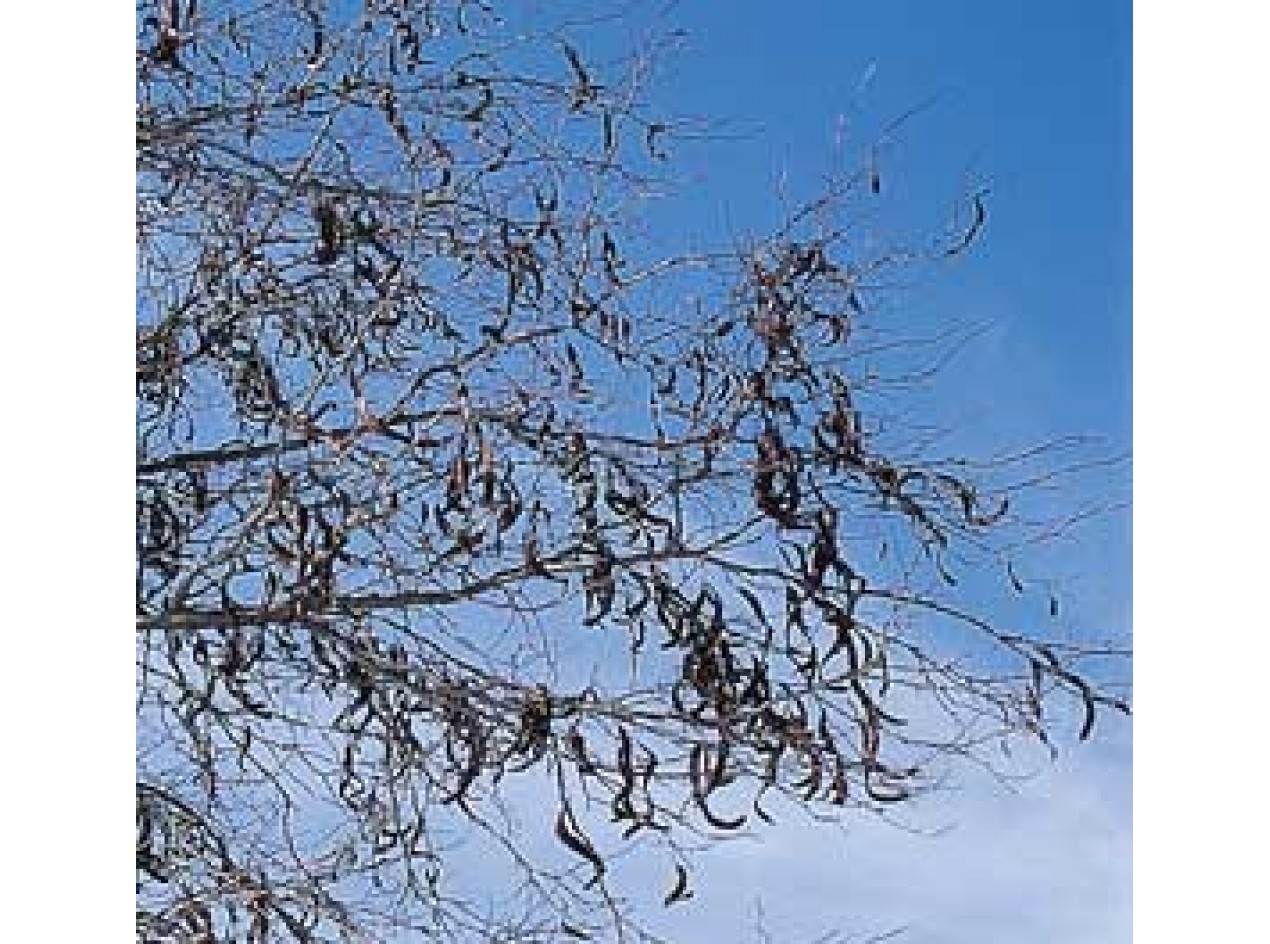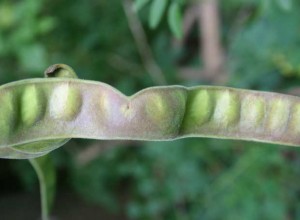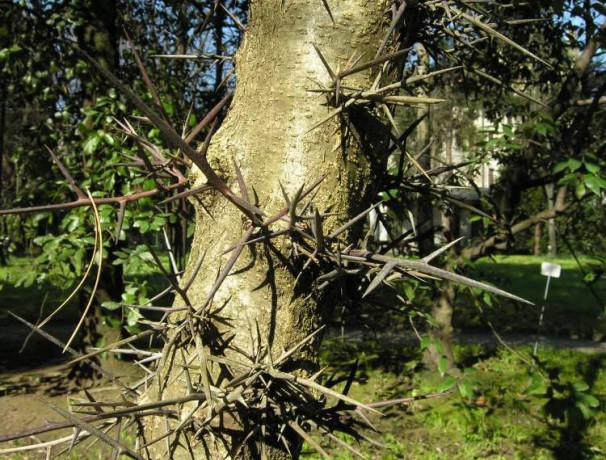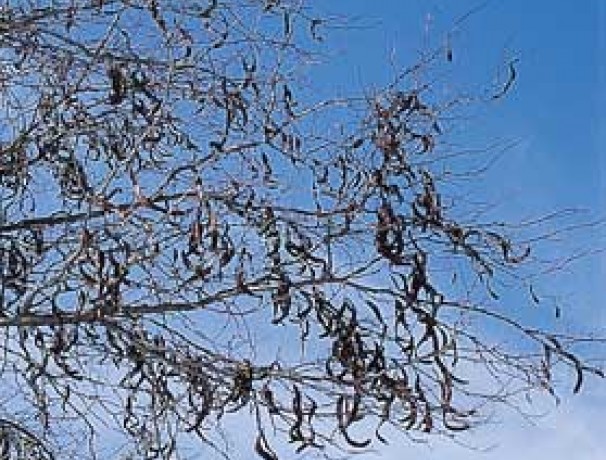No Thorns and Good Pod Production
Inermis is one of the sub species that was used in the breeding for pod production for livestock use. Our seeds were collected from wild trees primarily selections that show zero thorns. This is the species commonly cultivated as a street tree. (Usually podless types are grown which are then grafted to ornamental selections.)
Honey locust can be grown as a companion tree with walnut, oak, persimmon and pawpaw. It casts little shade so the suppression of grass or flowering trees like our plums, produces almost no effect on fruit quantity. Honeylocust does fix nitrogen and will produce nodules under the right circumstances.
These are vigorous trees reaching 2-3 ft. in one year from seed. It is not uncommon to find some trees growing up to 8 ft. in two years.
Our plants are 2 and 3 years old grown in bottomless pots. There are two types listed below: Regular Thornless and Curly Thornless.
"Curly" Thornless : This inermis thornless seed selection was found as a seedling in an urban environment that was both a semi dwarf plant and a super heavy pod producer. Some of the pods were 18 inches long. Although not a high sugar pod, the dense foliage and vigorous sprouting would make this seed strain worth adding to any multiple use tree crop or permaculture landscape big or small. The original tree produced a ton of pods despite its barren location. It appears to be smaller than most honeylocust trees and forms a broad rounded crown.
Regular: Midwestern seed source. As far as we can tell this seed source is entirely thorn free. Vigorous growth and typical of the species in terms of height and spread.
Honeylocust provides rot resistant lumber, nitrogen fixing roots and high nitrogen foliage which can be cut and used as fertilizer in multi-species permaculture and agroforestry plantings. This honey plant along with the pods can be used for food for livestock and human use. What an untapped resource!!
| Plant Specs |
| Genus & Species |
Gleditsia triacanthos inermis |
| Seed Source |
IL,MI |
| Hardiness |
-25 |
| Height (ft) |
60 |
| Width (ft) |
60 |
| Pollination Requirements |
Cross pollinates with other individuals with both male and female flowers on the same tree with perfect flowers. Is not purely dioecious like persimmon. |
| Soil |
Not picky, hence its use in some very inhospitable urban environments. Tolerates moisture and wetland conditions as well as soils proned to drought. |
| Climate |
Zone 4-9 |
| Ease of Cultivation |
Easy to grow and fruit. Amazing that so many plants will shade it out yet it will eventually find its way to the forest canopy growing perfectly straight. This plants wood, flowers and pod production yield many possibilities for agriculture. It is nitrogen fixing and the cuttings can remain on the ground as a source of fertilizer for other plants too. |




